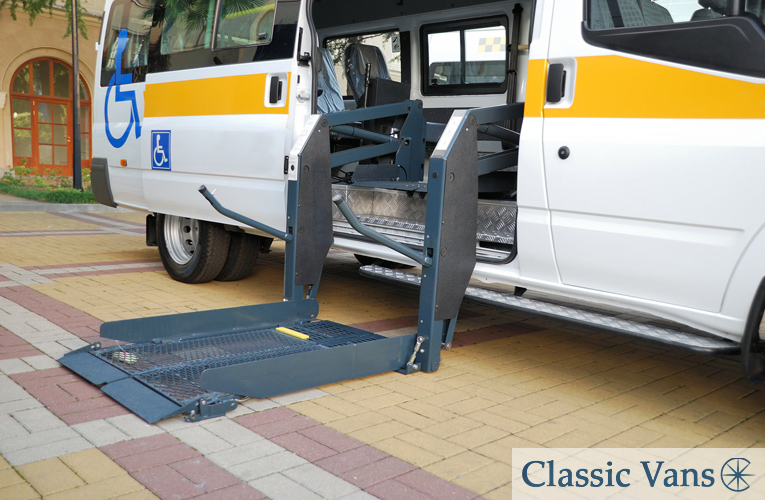
Tips and advice for safely driving and operating a wheelchair van
Granting unrestricted mobility for wheelchair users is a tremendous step in boosting their independence. Handicap accessible vehicles make the transportation of people living with disabilities hassle-free and safe. With mobility vans, wheelchair users can enjoy shopping, traveling, visiting friends and performing other activities ordinarily out of their reach.
However, while they come with tremendous benefits, disability vans can be potentially dangerous to both the driver and other road users. It’s important to observe specific tips for a safe driving experience.
The basics of a wheelchair van
Mobility vans are minivans and conversion vans that are equipped to enable wheelchair access. Typically, these vans offer access either from the rear or the side.
Does the position of entry matter?
Any position works fine. The choice depends on what works best for you or your loved ones.
With the side entry, the powered ramp unfolds from the side door opening. The passenger can sit in the center of the cabin or right behind the front passenger seat for convenience. However, since many side entry vans are equipped with a removable front seat, the wheelchair user can sit in the front passenger position.
Hand controls in some minivans make it possible for wheelchair users to use the driver’s seat. This amplified versatility makes it possible to carry up to 2 wheelchair users in 1 van.
Rear-entry access is preferable for wheelchairs that are high and wide. Rear doors are usually loftier and wider than side-door entries. Therefore, it’s more apt for taller and broader wheelchairs to facilitate simplified access.
The drawback of a rear entry is that ramps are usually manually operated. If you prefer automated ramps, it will cost you extra.
Wheelchair van driving tips
The following tips will make your mobility van safe both for the passengers and the people nearby. These guidelines will also ensure safety while driving, parking or exiting from your accessible van.
Tip #1: Secure your wheelchair to the floor
During transit, ensure that your wheelchair is properly secured to the floor so it does not become a projectile during a collision. Use a 4-point tie-down for maximum safety. Also, consider investing in an automatic locking system so as to eliminate human error from a manual locking system.
If your wheelchair locking system is manual, always secure the straps to the mainframe of your wheelchair. The frame is the sturdiest part of your wheelchair. Even though the footrest is easily accessible for strapping, it may not stand the test if an accident occurs.
Don’t secure your straps on detachable parts of the wheelchair, such as the headrests.
In case you find it difficult to move the tie-down tracks up and down, look out for debris that could be restricting movement. You could use a vacuum cleaner or a brush to rid of any debris.
Tip #2: Always wear a seat belt
Always use a seat belt while traveling in a wheelchair van. The use of seat belts is a requirement by law and ensures your safety in case of an accident.
Make sure that the seat belt is correctly fastened across your chest, arms and pelvis. Yes, your wheelchair is secured on the floor but get additional restraint by using the vehicle-installed seat belt for optimal protection.
Tip #3: Use a WC-19 compliant wheelchair
Wheelchairs labeled as “transport safe” are safer to use as they have undergone rigorous testing for safety standards. Compliant wheelchairs have a higher chance of protecting the occupant in case of a crash.
Tip #4: Know how to park a wheelchair van
Picking the right parking space ensures an easier exit from the vehicle. It also provides safety to the wheelchair user.
The standard handicap parking spot is typically the easiest option. However, it’s not always suitable for every wheelchair van, especially the ones with side entry. Rather, these spots are ideal for hatchbacks, sedans and SUVs whose width is less than 60 inches.
So, where can you safely park your van?
Below are some parking spots you can look out for.
- One-sided entry parking. To park your wheelchair van, use parking spaces labeled “Van Accessible.” These parking spots have a white-striped space on one side that is at least 96 inches wide. The ample width makes it easier to exit or enter the van using a ramp or a lift.
- Two-sided entry parking. This is an upgrade of the 1-sided entry parking space. It has the same specifications but you can access your vehicle from both sides.
- Parking next to a curb. If you cannot find a suitable handicapped parking space, you can park next to a curb. Remember to disable the “kneel” feature to enable the ramp to deploy at a more elevated height.
When parking your minivan, make sure there is enough space on the exit side to ensure stress-free entry and exit from the vehicle.
Tip #5: Maintain your wheelchair van and equipment
Even if you observe all the above tips, it can be to no avail if you fail to properly maintain your vehicle. Conversion vehicles require more preventive maintenance than ordinary cars. With this in mind, plan routine checkups for your van.
Your mechanic should perform some of the below checkups to ensure that your van is in tip-top condition:
- Change of oil and other serviceable parts
- Tire rotation to reduce wear and tear
- Checking door and ramp fasteners
- Oiling door slides
- Testing ramps, hand controls and kneel systems
Maintenance not only improves the safety of your van but also extends the life of its use. Maintenance is essential for ensuring a happy trip in your wheelchair van.